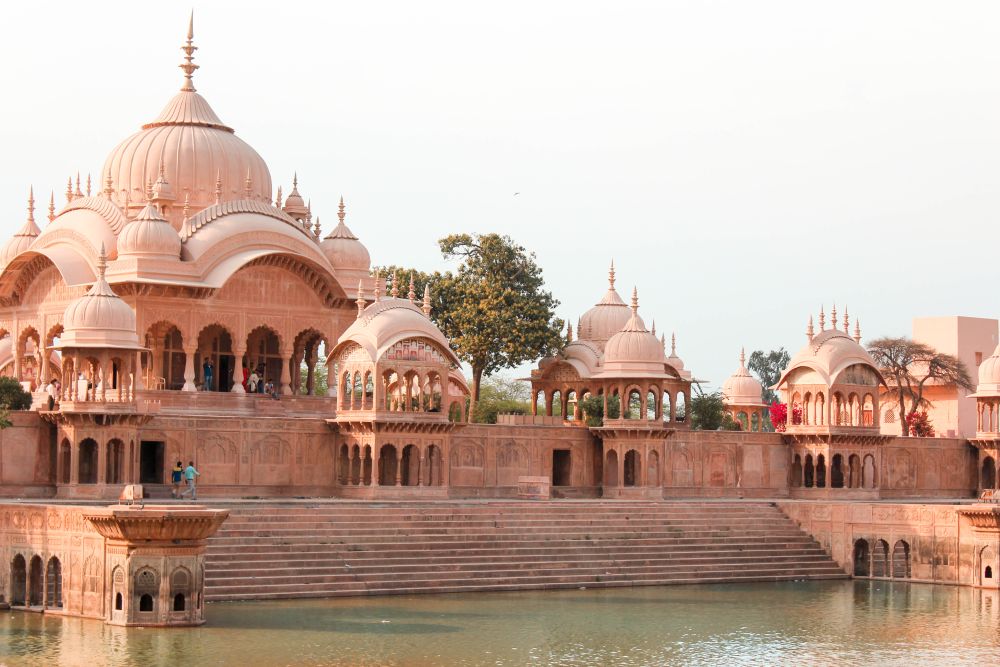

Kusum Sarovar, a historic and sacred reservoir, is nestled in the heart of Govardhan, close to Mathura in the Indian state of Uttar Pradesh. This picturesque water body spans a length of approximately 450 feet and reaches depths of up to 60 feet. The region's deep spiritual roots and vivid cultural tapestry have drawn pilgrims and tourists alike for centuries. Kusum Sarovar's name, which translates to "Lake of Flowers," originates from a charming local tale wherein Radha, a goddess in Hinduism, would rendezvous with her paramour, Lord Krishna, here to collect flowers.
The history of tourism in Kusum Sarovar can be traced back to the times when devout pilgrims embarked upon the Govardhan Parikrama, a sacred walk around Govardhan Hill, which has been a venerable tradition for ages. The sarovar became a significant pause point where pilgrims would rest and worship, engrossing themselves in the tranquility and sanctity of the environment. The ghats surrounding the reservoir, constructed by Jawahir Singh, the king of Bharatpur, in honor of his forefathers in the 18th century, reflect the architectural splendor of the bygone eras, enhancing the sacred site's allure.
The reservoir is flanked by a series of exquisitely carved sandstone chhatris (cenotaphs), each embodying the aesthetic richness of traditional Rajasthani design. These imposing structures stand as a commemorative to the members of the Bharatpur royal family and offer a glimpse into the resplendent past of India's craftsmanship.
Kusum Sarovar functions as not only a tourist destination but also a pivotal religious site for local festivities and rituals. The auspicious months of Kartik and Chaitra in the Hindu calendar mark the culmination of grand celebrations and fairs, attracting a multitude of worshippers.
In recent years, there has been a growing inclination towards sustainable tourism practices around Kusum Sarovar. Efforts are increasingly being made to maintain the purity of the sacred waters and the cleanliness of the surrounding areas. Local governing bodies, along with tourism authorities, are focusing on educating visitors to preserve the historic site's dignity while ensuring a fulfilling experience in their spiritual journey.
Tourists visiting Kusum Sarovar are encouraged to immerse themselves in the serenity and spiritual ambiance by attending the evening aartis (prayer offerings), which provide an enigmatic view of the reservoir against the setting sun. The calming sound of temple bells, the rhythmic chants, and the flicker of countless diyas (oil lamps) on the water's surface present an ethereal spectacle. You can also explore nearby attractions like Radha Kund, Shyama Kund, and Govardhan Hill, each holding its own mythological and historic significance.
The tale of tourism at Kusum Sarovar is a harmonious blend of spirituality, history, and natural beauty. As modern trends continued to evolve, the essence of this sacred place has remained unchanged, enchanting visitors with its timeless allure. Whether you seek spiritual solace, a touch of heritage, or simply the pleasure of a picturesque sunset, Kusum Sarovar in Mathura beckons with open arms.